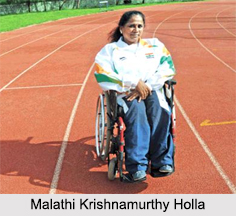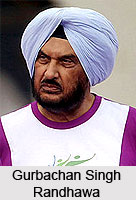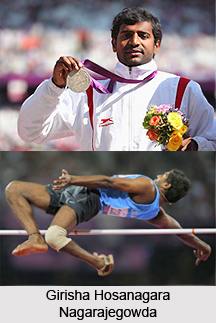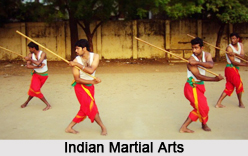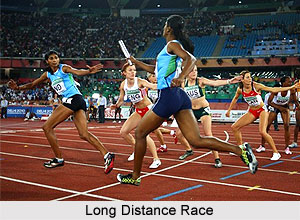 Long distance track event can be categorized into three different types: 3000 metres, 5000 metres and 10,000 metres. The latter two races are actually World Championship and Olympic events outdoors, while 3000 m is held at the IAAF World Indoor Championships. The 10,000 m and 5000 m events have their historical roots in the 3 mile and 6 mile races. Historically, the 3000 m was used as a women`s long distance event, entering the World Championship programme in 1983 and Olympic programme in 1984, but this was abandoned in favour of a women`s 5000 m event in 1995.
Long distance track event can be categorized into three different types: 3000 metres, 5000 metres and 10,000 metres. The latter two races are actually World Championship and Olympic events outdoors, while 3000 m is held at the IAAF World Indoor Championships. The 10,000 m and 5000 m events have their historical roots in the 3 mile and 6 mile races. Historically, the 3000 m was used as a women`s long distance event, entering the World Championship programme in 1983 and Olympic programme in 1984, but this was abandoned in favour of a women`s 5000 m event in 1995.
In terms of physical demand and rules of competitions, long distance track races have much in common with middle distance races, except that pacing, stamina and race tactics become much greater factors in performances. However, there are number of athletes who have succeeded in both middle and long distance events, including Said Aouita who set world records from 1500 m to 5000 m. The use of pace setters in long distance events is very common at the elite levels, although they are present at championship level competitions as all qualified competitors want to win.
The long distance track event achieved immense popularity in the 1920 by the achievements of the "Flying Finns", such as multiple Olympic champions Paavo Nurmi. The successes of Emil Zatopek in the 1950s promoted intense interval training methods, but Ron Clarke`s world record-breaking feats established the importance of natural training and even-paced running. The 1990s saw the rise of North and East African runners in long distance events. Kenyan and Ethiopian athletes, in particular, have since remained dominant in these events
This article is a stub. You can enrich by adding more information to it. Send your Write Up to content@indianetzone.com





